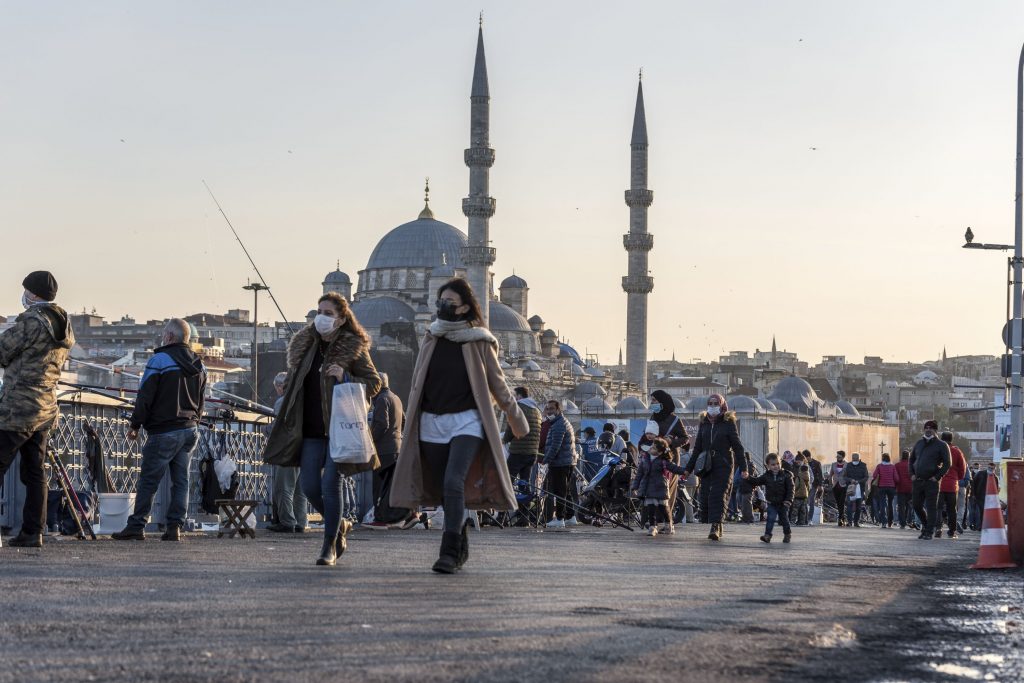This latest history of Turkey in the 20th century traces the line of change from the politically, militarily and economically derelict Ottoman Empire to the Republic of Turkey, today a member of the G20. For decades, the ground-breaking modernisation instigated by Mustafa Kemal Ataturk in the 1920s and early 1930s set the nation on what appeared to be a completely new path. Yet, for the last ten years at least, “modern” Turkey has found itself politically, institutionally and culturally dismantled by the Islamist response. The long road to Europe, initiated in the 19th century, has altered course.
Maurus Reinkowski’s Geschichte der Türkei (‘history of Turkey’) is a political history of Turkey that focuses on the actions of political protagonists and the government. Economic issues are barely touched upon; there are no socio-historic descriptions and analysis, or cultural history, beyond the realms of religion and political culture. But this is precisely the intention of the author, who is thereby better able to play to his strengths as a scholar of Islam.
Historic new beginning fraught with ambivalence
His book presents a finely nuanced illustration arising from three contradictions: that of secular and religious Turkey, associated political conflicts between the urban and rural milieus, as well as the politically relevant, highly-charged interplay of confidence and anger, which draws on historic emotions and which Reinkowski maintains is reflected in “the rapid switching between the roles of hero and victim, of virility and fragility”.
It was a historic new beginning fraught with ambivalence: the late emergence and radicalisation of Young Turks nationalism produced the government responsible for the genocide against Christian Syrians and Armenians in the Ottoman Empire in 1915, not to mention the continued presence and influence of the Young Turks elite within the Republic of Turkey, founded in 1923.
Ongoing repression
The historic caesura was however profound. Through the reforms associated with the name Ataturk and the political dominance of the Kemalists, says the author, the “Kemalist bureaucratic-intellectual-judicial-military complex” took shape. In other words, the state was dominated by the Kemalists, who were popular with educated city-dwellers, but enjoyed barely any support in the rural areas and among followers of the Sunni orthodoxy.
Yet one of the most momentous contradictions of the secular, ideologically oscillating Kemalist projects was to define the Turkish nation within the secular state – with the help of Islam. According to one of the political slogans of the early Republic, a Turk should not only be happy to call himself a Turk, but also differentiate himself, through his Sunni beliefs, from others at a national level.
This exclusionary nationalism with respect to a religious and ethnically heterogenous population within the Turkish “nation state” has remained a constant in the political actions of all Turkish governments to this day.
Ongoing nationalist repression has affected not only the country’s largest minority, the Kurds, but also Greeks remaining in Istanbul following the “population exchange” of 1923, as well as Jews, Armenians and Alevites.
Bombing rebel Kurds
But Reinkowski also refers to another contradiction. It was easy for the equally nationalist conservatives and predominantly Islamic political circles to wrest nationalism from the hands of the Kemalists. So, what then remained of Kemalism, once it had lost its nationalistic exclusivity? Ever since the AKP came to power, the “complex” has been trampled underfoot: the military has lost its power, the judiciary has been infiltrated by Islamists and the education sector purged. Kemalism has perished, asserts Reinkowski, and even future visions of a Turkey after the “autocracy” of Erdogan are unlikely to be able to re-invoke it.
Kemalism may be an obsolete future model, but history’s verdict on its ideology is controversial. Kemalism was more than a “complex”. It laid the foundations for a democratic Turkey: although it presented as authoritarian in its time, when voted out of office in 1950, the Kemalist party went without a whimper. It enjoyed loyal support in sections of society, particularly where it facilitated social advancement, including that of women. This was a paradoxical trait of Kemalism: it was emancipatory and repressive in equal measure.
Other stark examples of this contradictory movement include the emblematic scene in which Sabiha Gokcen, the Armenian-heritage adoptive daughter of Ataturk and the first female pilot in the Turkish air force, drops bombs in 1937 on rebel Kurds in the east Anatolian region of Dersim, now Tunceli. Or: the Kemalist putsch generals of 1960 who had the prime minister executed, only to usher in the most liberal phase of Turkey’s history with the constitution of 1961 – one that was however brutally scotched by other generals during the third coup of 1980.
en.qantara.de
